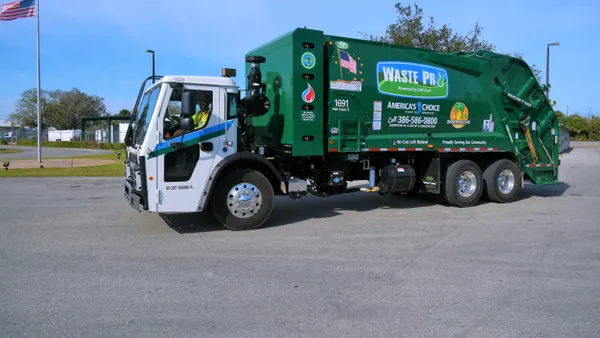Dive Brief:
- The Bureau of Labor Statistics reported that total non-farm employment added 313,000 jobs in February, the biggest job gain since mid-2016, and the trucking sector gained a whopping 5,600 jobs, marking the fastest pace of growth for the industry since 2015.
- The dramatic jump in trucking is likely a direct response to the capacity crunch and high truck driver turnover rate, which companies are trying to mitigate by upping employment.
- While the job increase suggests a growing trucking industry, future prospects are still mixed — truck driver retention is still a big problem as relations remain contentious between 3PLs, carriers and drivers.
Dive Insight:
Because trucking is often treated as a barometer for the health of the U.S. economy, a sharp increase in trucking jobs is usually interpreted as a positive sign.
But given the discord over the ELD mandate and driver misclassification, even high wages and attractive benefits packages aren't enough to bring down the turnover rate, which is almost at 100%. That dampens a positive interpretation of the jobs gains.
A jobs increase won't do much to alleviate tight capacity in the industry unless trucking companies and 3PLs can keep drivers in those jobs. Otherwise, if trucking volumes continue to climb, late shipments and delays could result.
Trucking growth could be nearing a ceiling if industry decision-makers can't find a way to grow at a sustainable pace that accounts for driver tensions and capacity limits.
But even if driver tensions continue, there are other ways to ease tight capacity: trucking companies could add new trucks to the market, so that even with a high turnover rate, capacity wouldn't be as aggravated. 3PLs like UPS are already planning big investments (attributed to increased cash flow due to recent tax cuts), so this could be a viable solution for many companies.
Many trucking companies and 3PLs are also exploring electric vehicle (EV) options, which could reduce costs in the long run and allow the industry to grow in a more sustainable way.
Then there's autonomous vehicles (AVs) — the industry wants to incorporate AVs, but not at the expense of drivers. Carriers could employ platooning tactics with AVs and employ fewer drivers as a response to the high turnover rate, or handling an AV could potentially attract more drivers as a less hands-on, focus-intensive and exhausting job.










